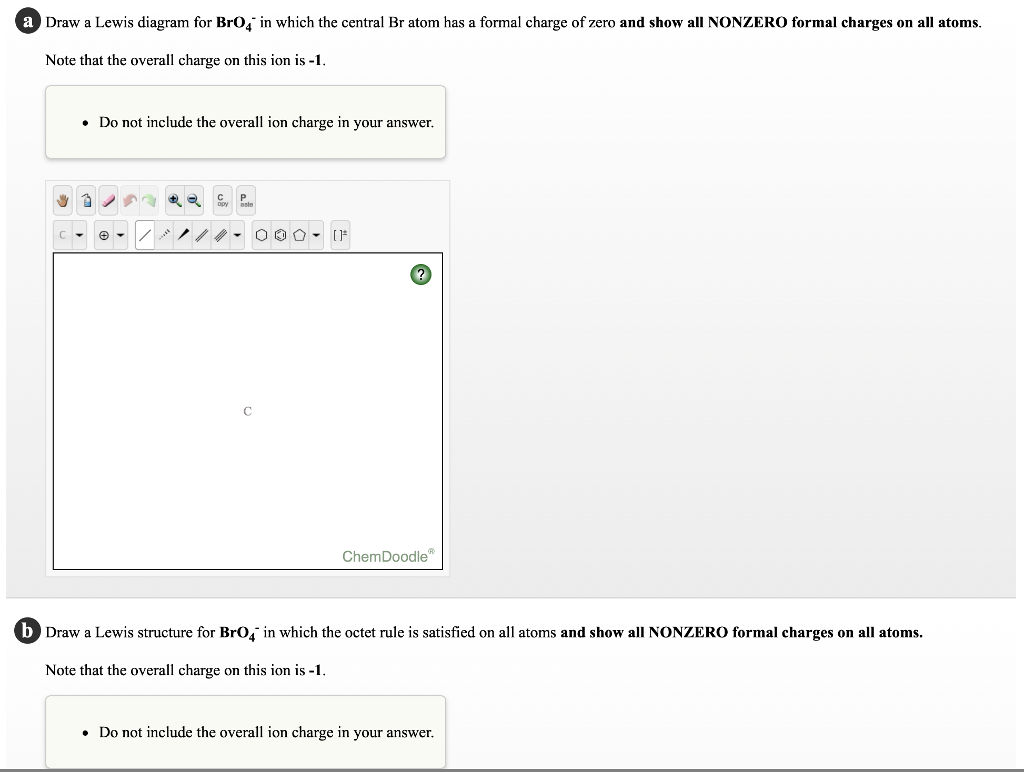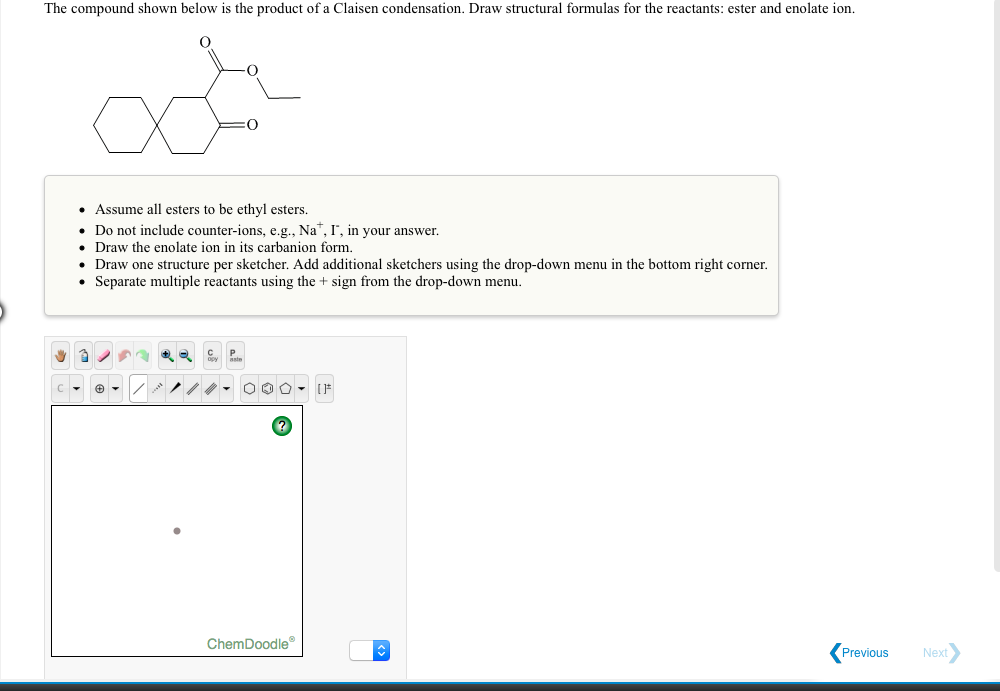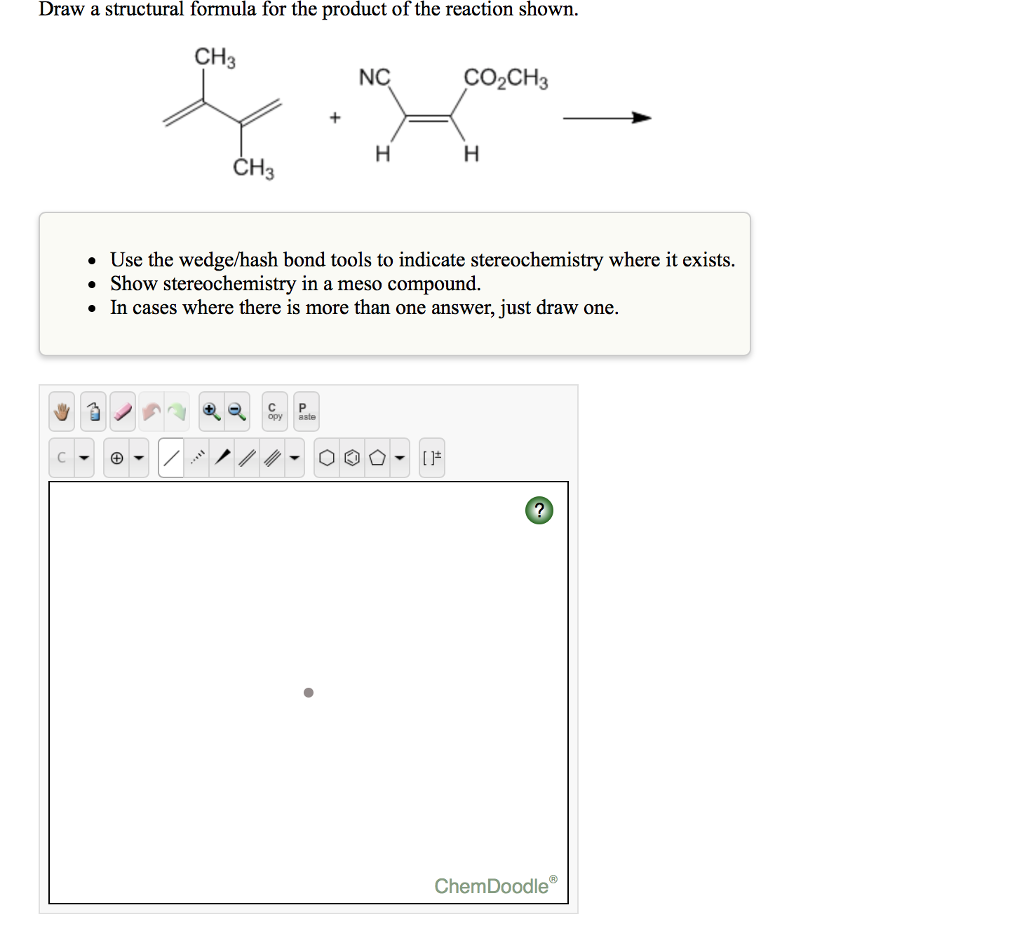


The editing tools are outlined in red in the screenshot below.
 Test yourself by trying Exercises 3 and 4 below. Experiment with this tool to see how it works. A number of common functional groups can be added using the functional groups tool. the keyboard shortcuts listed on the right provide an easier way to add elements other than carbon. To add other elements, click on the relevant tool and then click on one or more existing atoms. Carbon-carbon bonds are created by default. The element and functional group addition tools are outlined in green in the screenshot. Test yourself by trying Exercise 2 below. Selecting a ring tool and then clicking an existing bond will create a "fused" ring system. Ring systems can be drawn in a similar way by selecting the relevant tool and then clicking in the drawing area, or on one end of an existing bond. Test yourself by trying Exercise 1 below. The chain drawing tool easily creates a chain by clicking in the drawing area, or on an existing atom, and dragging the mouse to draw a chain of the desired length. Convert any type of bond (single, double, wedged, etc.) into any other by selecting the desired tool and clicking on an existing bond. Click again on a "wedged" bond to convert it into a "dashed" bond. Stereochemistry can be shown by using the "wedged" tool. Bonds will be drawn at conventional angles by default, but if you click on an atom and drag, you can draw the new bond at any angle. To add another bond click on one end of an existing bond. To draw a bond click on the single, double or triple bond tool and then click anywhere in the drawing area. The bond & ring drawing tools are outlined in blue in the figure on the right. The procedure is described in detail below. Choose the element and functional group tools from the menu and click on the ends of bonds in the drawing window to convert C atoms into other elements, or into some common functional groups. Choose the bond drawing and ring drawing tools from the menu and click in the drawing window to draw the bonds C-C bonds will be drawn by default. Try the exercises at the bottom of the page to check if you have mastered the use of JSME.ĭrawing structures in JSME is a straightforward two-step process:
Test yourself by trying Exercises 3 and 4 below. Experiment with this tool to see how it works. A number of common functional groups can be added using the functional groups tool. the keyboard shortcuts listed on the right provide an easier way to add elements other than carbon. To add other elements, click on the relevant tool and then click on one or more existing atoms. Carbon-carbon bonds are created by default. The element and functional group addition tools are outlined in green in the screenshot. Test yourself by trying Exercise 2 below. Selecting a ring tool and then clicking an existing bond will create a "fused" ring system. Ring systems can be drawn in a similar way by selecting the relevant tool and then clicking in the drawing area, or on one end of an existing bond. Test yourself by trying Exercise 1 below. The chain drawing tool easily creates a chain by clicking in the drawing area, or on an existing atom, and dragging the mouse to draw a chain of the desired length. Convert any type of bond (single, double, wedged, etc.) into any other by selecting the desired tool and clicking on an existing bond. Click again on a "wedged" bond to convert it into a "dashed" bond. Stereochemistry can be shown by using the "wedged" tool. Bonds will be drawn at conventional angles by default, but if you click on an atom and drag, you can draw the new bond at any angle. To add another bond click on one end of an existing bond. To draw a bond click on the single, double or triple bond tool and then click anywhere in the drawing area. The bond & ring drawing tools are outlined in blue in the figure on the right. The procedure is described in detail below. Choose the element and functional group tools from the menu and click on the ends of bonds in the drawing window to convert C atoms into other elements, or into some common functional groups. Choose the bond drawing and ring drawing tools from the menu and click in the drawing window to draw the bonds C-C bonds will be drawn by default. Try the exercises at the bottom of the page to check if you have mastered the use of JSME.ĭrawing structures in JSME is a straightforward two-step process: How To Use This Page: Read the notes on how to draw and edit structures in JSME. More detailed help can be obtained by clicking the "i" in the blue square in the top toolbar of the JSME applet, but the information provided here is adequate for use in this site. This page provides instructions on drawing chemical structures in JSME. On completing these exercises you should be able to:ĭraw complex organic structures in the JSME molecular editor. Drawing Structures Using JSME Learning Outcome







 0 kommentar(er)
0 kommentar(er)
